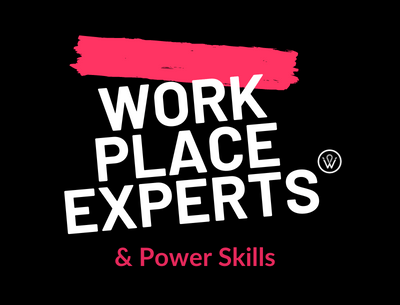
It is a business imperative.
Let’s go back to the definition of Diversity and Inclusion:
Diversity and inclusion are interconnected concepts that refer to the variety of unique individuals that make up a group of people and the environment that allows them to work together as equally valued contributors. Workplaces that prioritize diversity and inclusion efforts have been statistically proven to be safer, happier, and more productive work environments.
This is easier said than done.
How can a company Promote, Encourage and have it embedded in their Company Culture?
It starts with leaders, managers, top executives of the organization. You need to walk the talk and demonstrate every day with your behaviour, with your verbal expressions that you strongly believe and live Diversity and Inclusion.
As leaders, you have the obligation to create a safe space at the workplace where every voice is heard, where every individual is included in any activity. However, as humans we have all unconscious biases and sometimes, we are not aware of those. Whether you are a leader or not is irrelevant.
Let’s go to the very first step of the process to become an inclusive peer, leader, manager.
Starting with a quote of “Rumi”:
Yesterday, I was clever, so I wanted to change the world. Today, I am wise, so I am changing myself.
It is interesting to know that what you think about yourself is not the same how external people perceive you. As a strong Diversity and Inclusion advocate, I created the D&L chapter at Thomson Reuters as it started to become a fashion at companies. I was part of the global steering committee and the very first thing we decided to do is to raise self-awareness. We made it mandatory for each employee who started at our organization to go through an online unconscious bias training to be able to assess themselves first. This helped people to understand what their blind spots are and be more cautious when talking to people they don’t like so much or where they have a certain bias towards a culture, religion.
Being aware is great, however certainly not sufficient.
Everyone at the workplace needs to feel that this is an inclusive workplace.

For that, each leader has got the responsibility and accountability to show during meetings, during 1-2-1’ns that inclusivity is in the DNA of the organization.
Example: in teams we have humans who are extrovert vs humans who are introvert. As a leader, you have the responsibility to invite the introvert to speak, be heard in a meeting without being interrupted.
In addition, you need to know your team members. Their strong sides and weak sides, encourage them to take further steps to evolve, show empathy and listen in a non-judgmental manner.
If each leader, top executive acts in an inclusive way, employees will be more productive, engaged and committed.
As Henry Ford states:
“Coming together is the beginning, staying together is progress, and working together is success.”
Working together means, that every individual has got equal opportunities to contribute to and influence every part and level of a workplace, and belonging is ensuring that everyone feels safe and can bring their full, unique selves to work.
What makes Inclusion so important at the Workplace:
When employees trust that they, and their colleagues, will be treated fairly regardless of race, gender, sexual orientation or age, they are.
- They are more likely to look forward to going to work
- They are more likely to have pride in their work
- They are more likely to want to stay a long time at their company
Having an inclusive workplace culture will not only help you attract a diverse set of talent but also help you retain the diverse talent you attracted in the first place.
That increases the productivity in the organizations, thriving with purpose, creating a competitive advantage.

You might have diverse teams. However if you are not leveraging on your diverse team you miss out on great ideas, solutions, and engagement from the majority of your team.
Here we come to inclusion aspect. It is the managers, leaders responsibility to INCLUDE every single human in the conversation, team meeting. It is in each organizations interest to be known in their industry as the workplace to work for.
Now than ever, it is the number one criteria for employees to work for an organization where they feel safe, heard, recognized as who they are, flexible and creative. The traditional style of future employees to be chosen by an organization has shift towards that the employees now choose where they want to work.
Creation of an inclusive workplace starts with the job advertisement style and language used up to events and opportunities presented in the company.
PS: we mentioned already the importance of leadership style.
Have spaces where mothers, religious people can pray or can take time off during working hours. Respect employees’ beliefs and ideas, celebrate specific dates which are important for the demographic at your company. Organize culture events, like food festival, which is simple. That allows sharing, explaining about culture, tradition. Celebrate gender international days. Use language which is neutral.
These are some tips that can be seen as quick wins.
However, the beauty comes from including employees to come up with what they want to see happening at work. Always ask for feedback, I call it Feed Forward. What the organization thinks will be good for employees is not necessarily how employees feel. Make them part of creating an inclusive workplace.
Your organization will bloom together with your employees.
As my motto: from union comes strengths.
As for the leaders: have your pledge, commitment statement.
Here are some reflection questions:
- What is the one thing you are going to do to create an inclusive workplace?
- When are you going to take action?
- Whom will you involve?
- What could be an obstacle?
- How would you overcome it?
- Where are you at the moment with inclusion on a scale of 1-10 (10 being the highest)?
Some food for thought.
For an inclusive, equal workplace.
 Written by Hulya Kurt
Written by Hulya Kurt
Enthusiastic about empowering humans to take action and become resourceful.
Accredited Business and Family coach, workshop facilitator, experienced&accredited mentor, and speaker.
First-time author.





